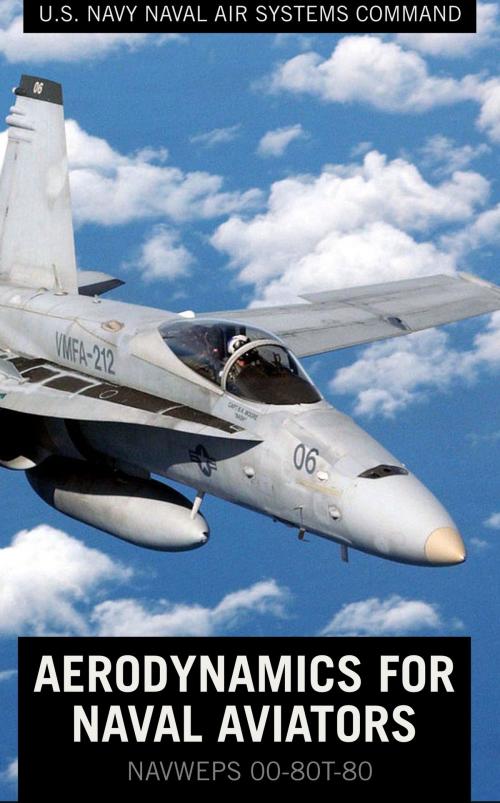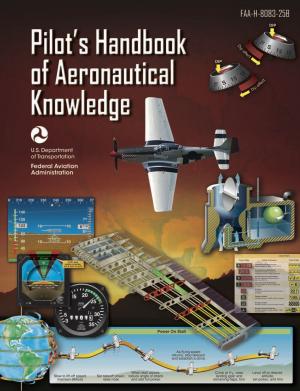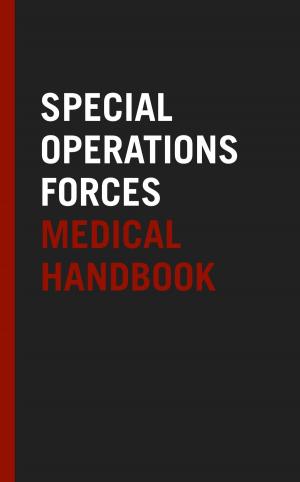Aerodynamics for Naval Aviators
NAVWEPS 00-80T-80
Nonfiction, Science & Nature, Technology, Aeronautics & Astronautics| Author: | U.S. Navy Naval Air Systems Command, Hugh Harrison Hunt | ISBN: | 1230001942545 |
| Publisher: | Ravenio Books | Publication: | September 13, 2016 |
| Imprint: | Language: | English |
| Author: | U.S. Navy Naval Air Systems Command, Hugh Harrison Hunt |
| ISBN: | 1230001942545 |
| Publisher: | Ravenio Books |
| Publication: | September 13, 2016 |
| Imprint: | |
| Language: | English |
The purpose of this textbook is to present the elements of applied aerodynamics and aeronautical engineering which relate directly to the problems of flying operations. All Naval Aviators possess a natural interest in the basic aerodynamic factors which affect the performance of all aircraft. Due to the increasing complexity of modern aircraft, this natural interest must be applied to develop a sound understanding of basic engineering principles and an appreciation of some of the more advanced problems of aerodynamics and engineering. The safety and effectiveness of flying operations will depend greatly on the understanding and appreciation of how and why an airplane flies. The principles of aerodynamics will provide the foundations for developing exacting and precise flying techniques and operational procedures.
The content of this textbook has been arranged to provide as complete as possible a reference for all phases of flying in Naval Aviation. Hence, the text material is applicable to the problems of flight training, transition training, and general flying operations. The manner of presentation throughout the text has been designed to provide the elements of both theory and application and will allow either directed or unassisted study. As a result, the text material will be applicable to supplement formal class lectures and briefings and provide reading material as a background for training and flying operations.
Much of the specialized mathematical detail of aerodynamics has been omitted wherever it was considered unnecessary in the field of flying operations. Also, many of the basic assumptions and limitations of certain parts of aerodynamic theory have been omitted for the sake of simplicity and clarity of presentation. In order to contend with these specific shortcomings, the Naval Aviator should rely on the assistance of certain specially qualified individuals within Naval Aviation. For example, graduate aeronautical engineers, graduates of the Test Pilot Training School at the Naval Air Test Center, graduates of the Naval Aviation Safety Officers Course, and technical representatives of the manufacturers are qualified to assist in interpreting and applying the more difficult parts of aerodynamics and aeronautical engineering. To be sure, the specialized qualifications of these individuals should be utilized wherever possible.
The majority of aircraft accidents are due to some type of error of the pilot. This fact has been true in the past and, unfortunately, most probably will be true in the future. Each Naval Aviator should strive to arm himself with knowledge, training, and exacting, professional attitudes and techniques. The fundamentals of aerodynamics as presented in this text will provide the knowledge and background for safe and effective flying operations. The flight handbooks for the aircraft will provide the particular techniques, procedures, and operating data which are necessary for each aircraft. Diligent study and continuous training are necessary to develop the professional skills and techniques for successful flying operations.
The purpose of this textbook is to present the elements of applied aerodynamics and aeronautical engineering which relate directly to the problems of flying operations. All Naval Aviators possess a natural interest in the basic aerodynamic factors which affect the performance of all aircraft. Due to the increasing complexity of modern aircraft, this natural interest must be applied to develop a sound understanding of basic engineering principles and an appreciation of some of the more advanced problems of aerodynamics and engineering. The safety and effectiveness of flying operations will depend greatly on the understanding and appreciation of how and why an airplane flies. The principles of aerodynamics will provide the foundations for developing exacting and precise flying techniques and operational procedures.
The content of this textbook has been arranged to provide as complete as possible a reference for all phases of flying in Naval Aviation. Hence, the text material is applicable to the problems of flight training, transition training, and general flying operations. The manner of presentation throughout the text has been designed to provide the elements of both theory and application and will allow either directed or unassisted study. As a result, the text material will be applicable to supplement formal class lectures and briefings and provide reading material as a background for training and flying operations.
Much of the specialized mathematical detail of aerodynamics has been omitted wherever it was considered unnecessary in the field of flying operations. Also, many of the basic assumptions and limitations of certain parts of aerodynamic theory have been omitted for the sake of simplicity and clarity of presentation. In order to contend with these specific shortcomings, the Naval Aviator should rely on the assistance of certain specially qualified individuals within Naval Aviation. For example, graduate aeronautical engineers, graduates of the Test Pilot Training School at the Naval Air Test Center, graduates of the Naval Aviation Safety Officers Course, and technical representatives of the manufacturers are qualified to assist in interpreting and applying the more difficult parts of aerodynamics and aeronautical engineering. To be sure, the specialized qualifications of these individuals should be utilized wherever possible.
The majority of aircraft accidents are due to some type of error of the pilot. This fact has been true in the past and, unfortunately, most probably will be true in the future. Each Naval Aviator should strive to arm himself with knowledge, training, and exacting, professional attitudes and techniques. The fundamentals of aerodynamics as presented in this text will provide the knowledge and background for safe and effective flying operations. The flight handbooks for the aircraft will provide the particular techniques, procedures, and operating data which are necessary for each aircraft. Diligent study and continuous training are necessary to develop the professional skills and techniques for successful flying operations.















